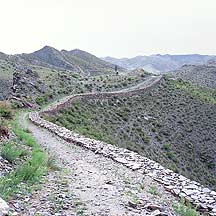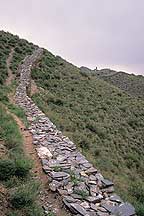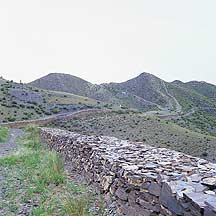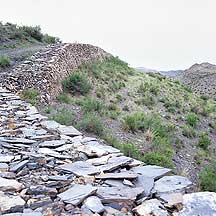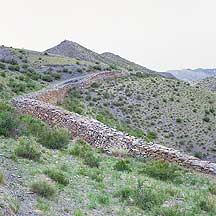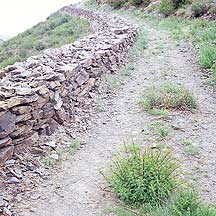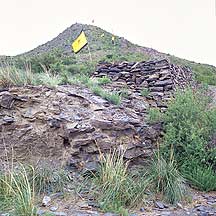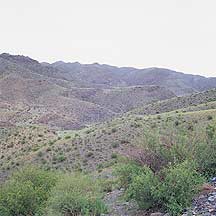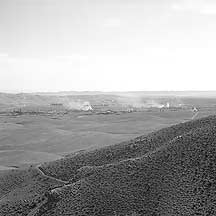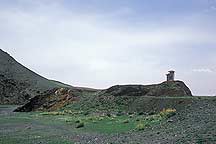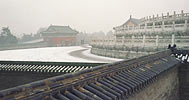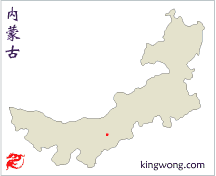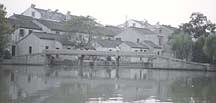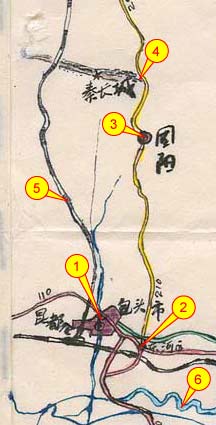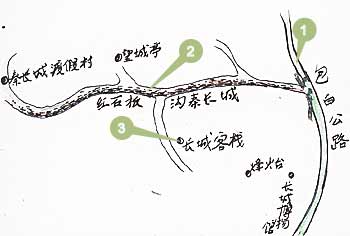 Text continues from above.
Text continues from above.
After a short ride from 固阳Guyang, I reached the Wall. I was here just after the entrance gate had closed, but there was a stone stairway on the side of the hill that goes up to the Wall. Once up, I saw the Wall lying quietly on the side of the smooth rolling hills. The part I saw had none of the scale and drama of other sections of the Great Wall, but on the colorful hills it had charms. So many years passed like falling leaves, much of the old Wall just got buried by the gifts of wind. And in its most active days, a hillful of sheeps may wander about its lost borders; so little was here to keep it amused that it got depressed like a forgotten hero.
Much of the original Wall is now beneath the surface; on top are the new stones that followed the ancient buried Wall. In the two hours or so here, I met a group of Guyang natives touring the site. It was their first time here since the area was promoted as a tourist place recently. They were proud that the poor county now has a national treasure in their vicinity. Hopefully, it will help its economy. But it will take some time since it looked like we were the only tourists here.
On leaving I walked toward the direction to Guyang, and waved at any vehicle along the way. No one stopped. Half an hour later I met a man sitting and smoking by the roadside. He is from 河南省Henan Province, and he worked in the nearby factory that makes firecrackers. He pointed to the group of flat-roofed brick houses not far below the road. I squatted and spoke with him for a little more while I looked at the surrounding landscape. The crescent road is a cut from the slope of one hill after another. Off the hills is the vast earthy and reddish flat land — empty except for a short parallel line of trees.
On this wide secluded land the firecracker factories were as quiet as a madman in crowded street. I left another half hour later with no luck getting a ride. So I continued my way toward the county. After another half hour of waving, a cargo truck finally stopped for me. Two locals were returning to Guyang. I climbed up the big truck and squeezed in. The men were in their late thirties, with the looks of those that build a country. They appeared to be tired, so the ride was quiet. At close to the town, I wanted to pay for the ride, but they refused. I had to insist several times til they finally accepted it.

